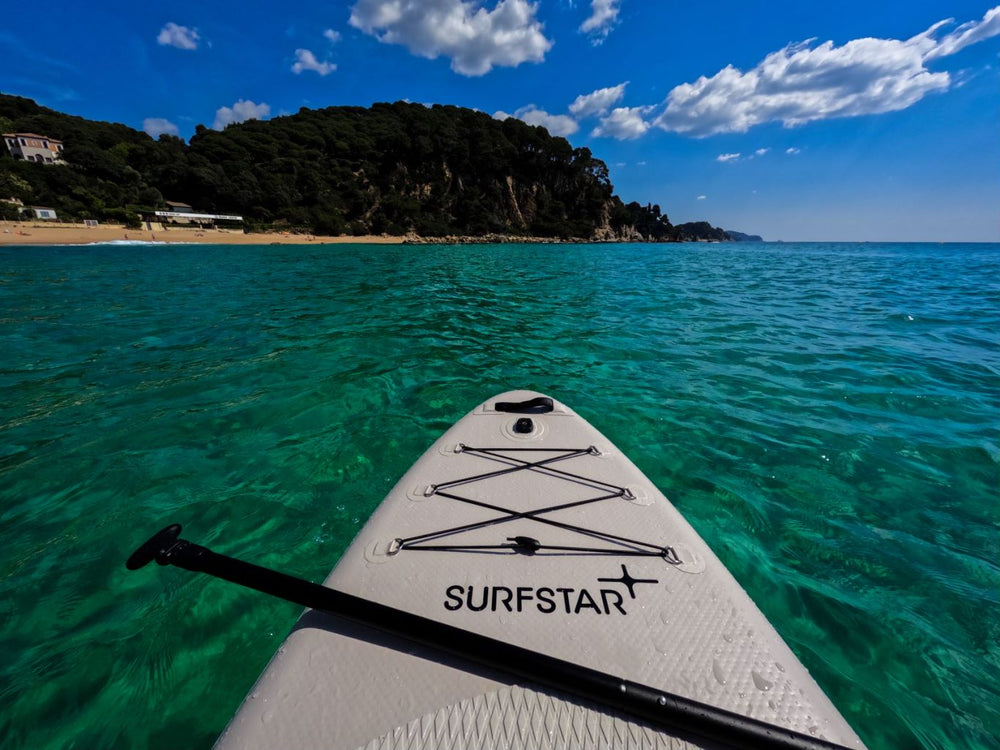How To Keep Your Feet Warm When Paddling In Cold Weather
By now, you’re probably already used to paddling around in t-shirts and shorts during the summer. Well, how about colder seasons? Paddle boarding in the cold weather may seem utterly ridiculous, but no, it isn’t. Going paddle boarding in the winter is still a lot of fun, the key is to dress appropriately. “There’s no such thing as bad weather, just bad clothing” they say.
The beauty of SUP is being able to have fun regardless of the season. Whether you’re catching waves in the heat of summer navigating an icy lake in the depths of winter, one thing is certain: if you don’t have the proper SUP equipment, your winter SUP session will be unpleasant. It’s not just a matter of staying warm on the water for a better stand-up paddle board experience; it’s could be dangerous in certain situations. Our goal is for you to enjoy your time on your paddle board no matter what the weather is like!
Are you considering going paddleboarding in the cold? Well, below are some of our favorite winter paddling tips and recommendations on how to be best prepared before hitting the water.
Maintaining Your Body’s Warmth And Dryness
Paddling in cold water requires special clothing to keep you warm whenever the air is cool and to keep you dry incase you end up in cold water - staying warm and dry is crucial out there! It’s also important to note that you must always dress as if you’ll end up in the water swimming by accident, because this can and will occur to you when you go out on rigid waters.
Keeping Your Feet Warm and Dry
When planning on how to remain warm and dry while paddling during cold seasons, it’s important that you prioritize your feet. Your feet is your direct point of contact with your board, which is why ensuring your feet are warm during cold weather paddling is first on our list.
Your feet are likely to get wet when you go paddling, so you’d better have something to keep them warm. We recommend wearing a pair of neoprene booties when going paddling in cold weather. Booties come in a variety of styles, the majority of which have a thick rubber sole for better traction and protection when walking on rocks. And most importantly, booties will keep your feet warm.
Booties are available in two styles: low-top, exposed-ankle and high-top, over-the-ankle. Over-the-ankle booties keep you warmer in cold water because they prevent water penetration. Low-top booties on the other hand protect your sole and heel, and are ideal for warmer weather.
Now that your feet are safe, how about the rest of your body since they are inseparable parts when you need to stay warm overall ?
Layers!
Layers are an essential part of every physical activity, especially when it’s cold outside and you’re participating in a watersport. When it comes to dressing for paddling in the cold, consider the following layers: A base layer that’s water-resistant, a mid-layer that retains heat, and an outer-layer that keeps you dry and protected from the wind. And, whatever you do, stay away from cotton in all layers because it absorbs moisture and remains wet, making you colder. Look for synthetic materials, or materials made of wool.
Protecting Your Head And Hands
When preparing for cold water paddling, it’s easy to overlook your hands and head, but you’ll definitely feel the chill if you forget to protect them! We have a few suggestions to keep your fingers and ears from freezing.
A happy and fulfilled paddler is one who keeps his head warm. Water resistant hats are some of the best paddling accessories because they keep your head warm and dry even when it’s raining or spraying.
If you reckon your head might be submerged under water, you should wear a wetsuit hood to protect yourself from the cold. It is usually made of neoprene and works similarly to a wetsuit in keeping you warm.
Paddling in cold weather or in cold water can easily result in cold hands. They’re exposed to the elements, including wind and spray, and frequently end up in the water. It’s critical to keep your hands warm, but with the right gear, it’s simple.
A good pair of paddling gloves can help keep your hands warm when the weather is cold, in addition to preventing blisters. You’ll want something that’s water-resistant, long-lasting, and comfortable to hold. The most common materials used in paddling gloves are neoprene, nylon, and Lycra® spandex. If you’re concerned about getting your hands wet, neoprene is the way to go.
If you’re paddling on flat water, a nice pair of gloves with grippers on the palms will suffice. There are also paddlers pogies that protect your hands without compromising your grips.
If you follow our advice, you’ll be warm (and mostly dry) from top to bottom the next time you go paddleboarding in the cold weather.





Leave a comment